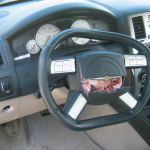I received a question from a person who after watching the “Chest Injuries and CPR” video blog asked:
Dear Roy,
Reading your letter, I would agree if the injury is just soft tissue injury. However if a # is suspected, It would be dangerous to do CPR as the # might or will puncture the lungs and cause immediate death, if immediate intervention is not available.
Kindly comment.
Here is my response:
Hello,
Regarding your question about Chest Injuries and CPR. It’s important to make a distinguishing point whenever we talk about CPR. When a person is in need of CPR, it means that the person is in cardiac arrest. This is to say that they are unconscious, not moving, not breathing normally. If this is the case, they are presumably in cardiac arrest or in a state that justifies Cardio Pulmonary Resuscitation.
If the person needs CPR, this means that they are clinically dead. If the victim does not receive CPR, they will simply graduate to permanent death otherwise known as biological death(permanent).
This is why, regardless of the chest injury, if the person is “dead” or in need of CPR, compressions are to be given per the American Heart Association guidelines even if the complications could include those of punctured lungs, lacerated organs, or bruised/punctured heart muscle. This would be based on the theory that a person in need of CPR is already dead and will not be harmed more even if there are negative side effects from providing chest compressions. If a person remains dead, surgery is not an option but if the person is resuscitated with CPR, and alive at the hospital, we have an opportunity to fix the injuries that may have been aggravated by doing CPR.
If however, the person is awake, is breathing normally and therefore does not appear to need CPR, it would be correct that chest compressions and CPR may complicate the already damaged chest and complicate the victims injuries. As soon as the victim becomes unconscious, is not breathing normally and now appears to need CPR, Emergency Services would be contacted and CPR would be initiated regardless of the injuries of the patient.
I appreciate the question and hope that this clarifies any confusion caused by the article. Please don’t hesitate to email me again if you would like to continue dialogue on this subject.
Best Wishes,
Roy Shaw, RoyOnRescue.com
royonrescue@gmail.com




